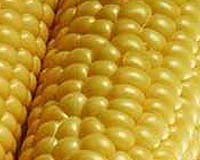 |
Copenhagen, Denmark (SPX) Dec 21, 2009 Cetrel and Novozymes have announced a research partnership to turn sugarcane waste into green energy. Using Cetrel's know-how in waste-stream treatment and Novozymes' biotech expertise, the partners aim to enable sugar and ethanol production plants in Brazil to turn bagasse, the waste from sugarcane production, into biogas using enzymes. The biogas can be used to produce electricity for the production facilities, and surplus electricity can be sold to the market through the electric grid. "Cetrel has been upholding environmental equilibrium within the industrial process since its origin 30 years ago. For the past few years we have driven our experience in innovative projects toward alternative bioenergy sources and means to reduce greenhouse gas emissions. And we're very glad to share this knowledge with Novozymes to reinforce and strengthen our technologies," says Nei Silva, CEO of Cetrel. "Our agreement with Cetrel is perfectly aligned with our vision to develop a biobased society, where biorefineries convert agricultural residues and waste into energy, chemicals and other materials, thereby substituting fossil fuels. The project also offers strong technical and commercial synergy with our efforts on advanced biofuels," says Thomas Videb�k, Executive Vice President, Novozymes.
Great potential of sugarcane waste "In Brazil there's plenty of sugarcane and Cetrel chose it as a main subject for a thorough investigation. As a result, we have today a complete understanding of its characteristics and how it reacts, enabling us to extract the most value out of the sugarcane," says Nei Silva. The partnership is still in an early development stage but if successful, the technology might be commercially viable a few years from now. Share This Article With Planet Earth
Related Links Cetrel Bio Fuel Technology and Application News
 Scientists complete corn genome
Scientists complete corn genomeAmes, Iowa (UPI) Nov 20, 2009 After three years and $30 million, U.S. scientists have finished mapping the complete genome sequence of corn, the most widely eaten cereal after rice. A strain of corn called B73 may prove to be a textbook of how genes work, said Patrick Schnable, a geneticist at Iowa State University, where the strain was developed in the 1970s. "Corn is a good model for biology in general," ... read more |
|
| The content herein, unless otherwise known to be public domain, are Copyright 1995-2009 - SpaceDaily. AFP and UPI Wire Stories are copyright Agence France-Presse and United Press International. ESA Portal Reports are copyright European Space Agency. All NASA sourced material is public domain. Additional copyrights may apply in whole or part to other bona fide parties. Advertising does not imply endorsement,agreement or approval of any opinions, statements or information provided by SpaceDaily on any Web page published or hosted by SpaceDaily. Privacy Statement |